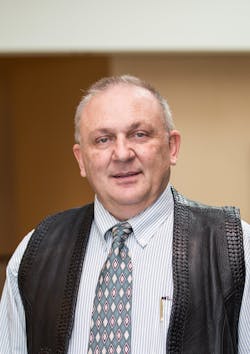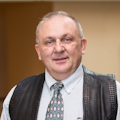
In late April, I visited the SPIE Defense, Security + Sensing show in Baltimore. This conference focuses on many market areas involving lasers – for instance, night vision, range finding, targeting, and LIDAR. All of these areas involve sensitive government restrictions on commercial use of many products so the security at the show was probably tighter than at most shows.
Several vendors informed me that the number of visitors with xxx.mil e-mail address was down this year because of the government "sequestration" and that in general the show traffic was down compared to previous years. Also, a few of my friends with high security clearance informed me that they had to sit through special courses held by an unnamed government agency just to visit the show … and in particular the concern was technology transfer to North Korea and Iran. At any other show, I would have been chatting up the beautiful Russian woman sitting next to me at the pub, but...
There were many interesting booths, but one in particular really caught my eye: Velodyne LiDAR. (Yes, sister company Velodyne Acoustics is known for its awesome subwoofers that deliver distortion-free base sounds using digital-drive real-time feedback technology.) Velodyne is focused on LIDAR-based People Tracking. Walking past the booth, I noticed on a giant LCD screen that a camera seemed to follow me while walking by, and a warning light illuminated when I stepped into a zone marked "secure" on the computer screen.
While the PZT camera that was used for this technology demonstration was not the most impressive part of this demo, the kicker that got my attention was the real-time captured 360 degree images generated by Velodyne’s HDL32 LiDAR sensor, equipped with 32 rotating lasers and 32 rotating sensors. At up to 20 Hz, a real-time point cloud is generated, depicting more than 700,000 true X, Y, Z points per second that allows easy recognition of people walking along the show floor and exhibitors moving around within their booth space.
The human eye can easily discriminate that points that move together are associated with people and the People Tracking software from Raytheon/BBN also allowed a computer to track the people in real time. The user can select a "person of interest" and this tracking information is passed on to a PTZ camera that follows the person right and left and if the person walks further way, the camera zooms in further based on the 3D information from the LiDAR sensor. This could come in very handy for tracking people and their flow through secure areas like airports, jails, and nuclear facilities. In addition, patterns could easily be recognized from the recorded tracks without having to store terabytes of data as would be the case for 2D cameras that require very sophisticated object recognition software to do something only remotely similar.
The photo above shows the rotating LIDAR sensor. This technology can also be used for self-driving automobiles and other automated transportation applications.
This is my first blog on Industrial Laser Solutions, and in the future I will be adding many more. Now, off to Munich for Laser World of Photonics, followed by CLEO and MDM East in June and Semicon in July. I will be bringing reports from all of these conferences. Please feel free to contact me at [email protected].
About the Author
Ron Schaeffer
Ron Schaeffer, Ph.D., is a blogger and contributing editor, and a member of the Laser Focus World Editorial Advisory Board. He is an industry expert in the field of laser micromachining and was formerly Chief Executive Officer of PhotoMachining, Inc. He has been involved in laser manufacturing and materials processing for over 25 years, working in and starting small companies. He is an advisor and past member of the Board of Directors of the Laser Institute of America. He has a Ph.D. in Physical Chemistry from Lehigh University and did graduate work at the University of Paris. His book, Fundamentals of Laser Micromachining, is available from CRC Press.
